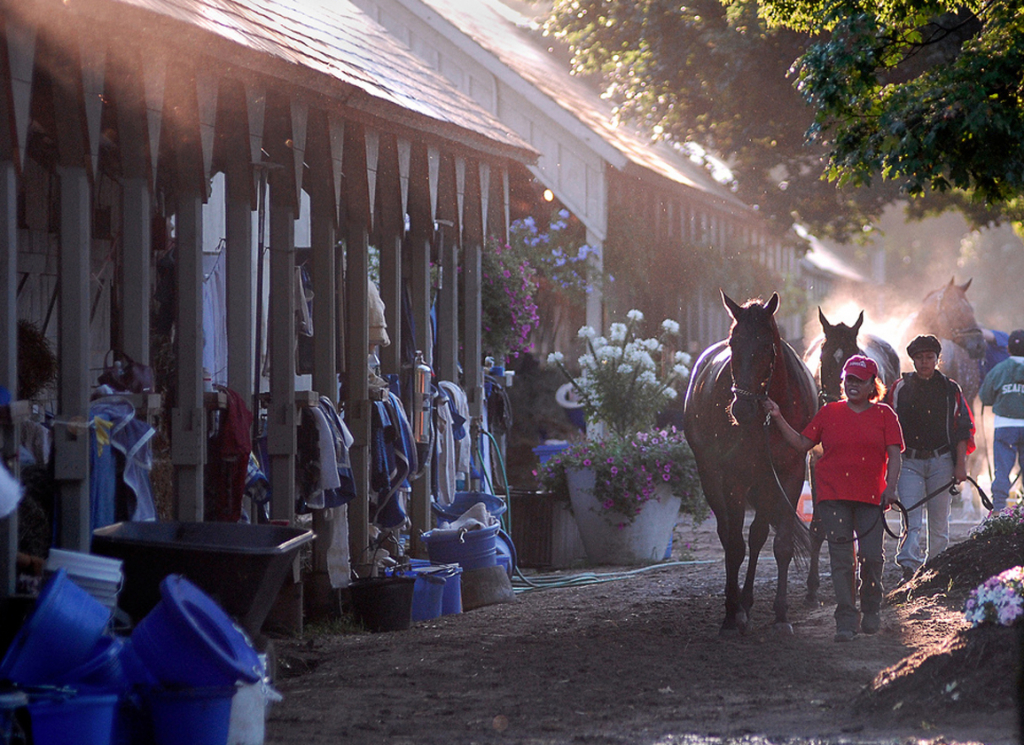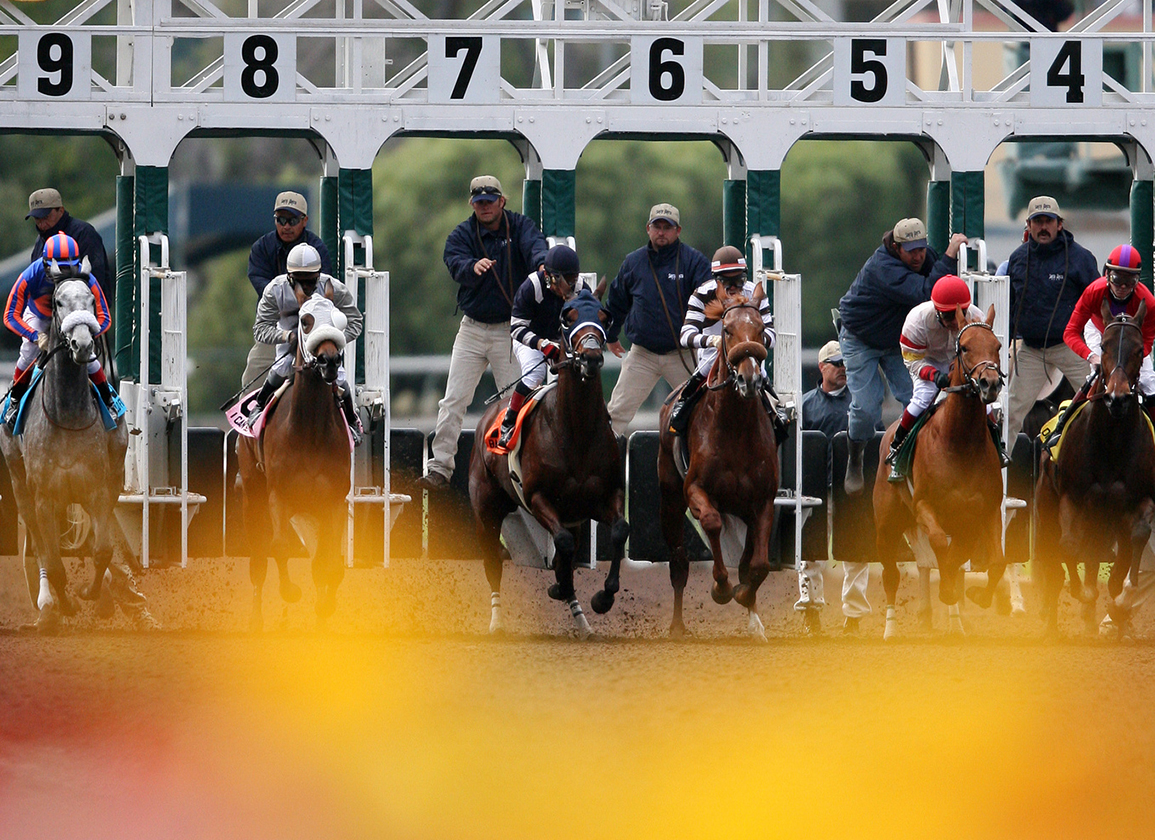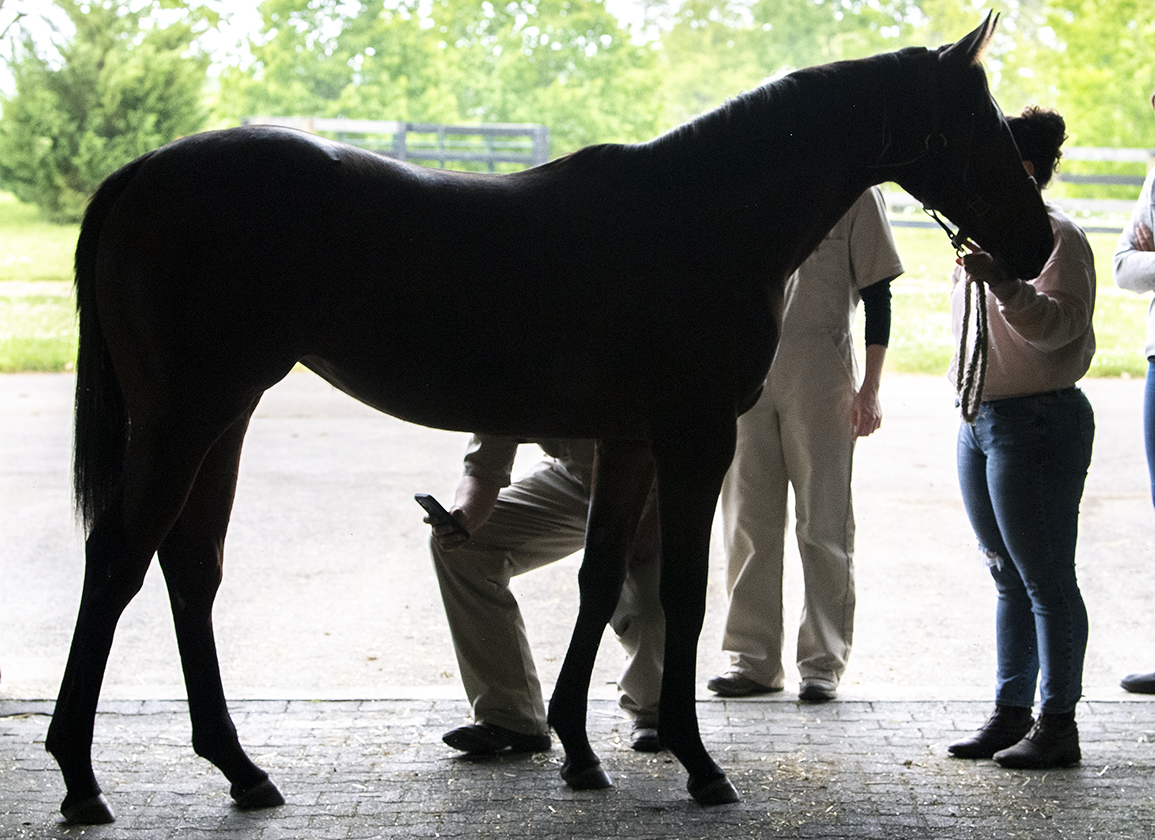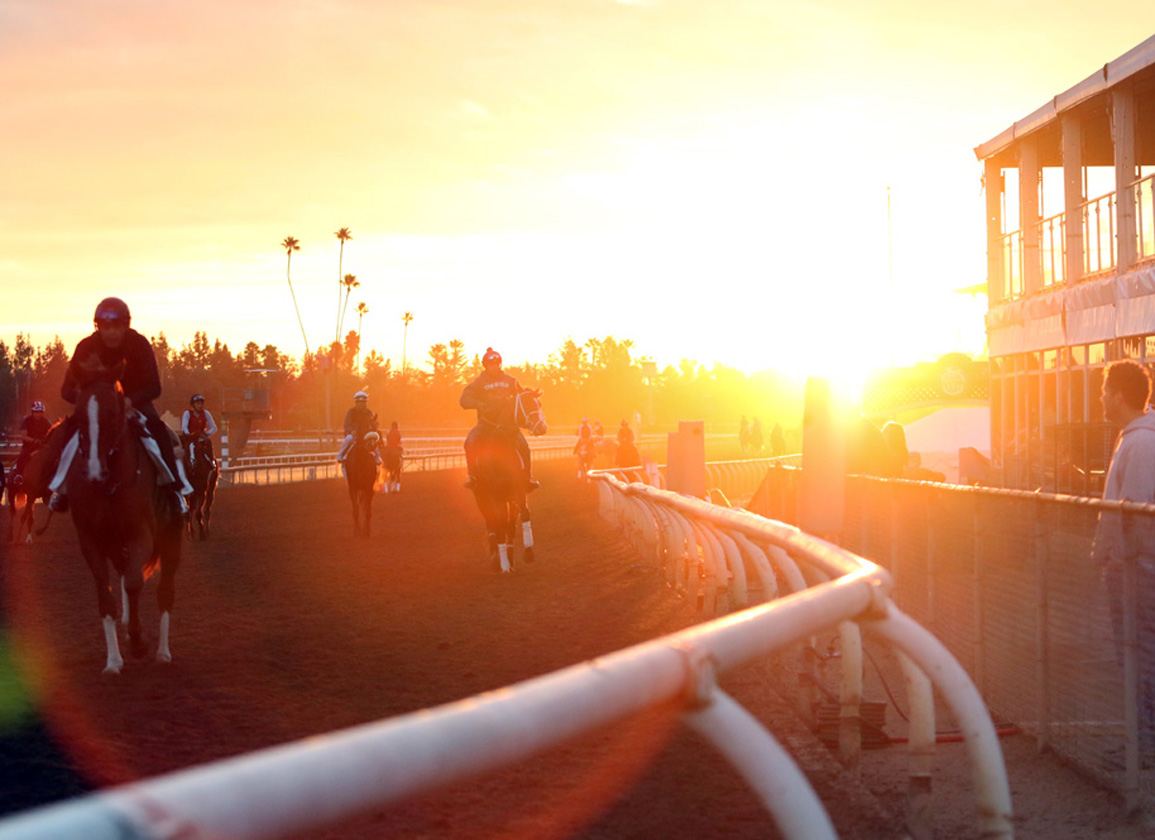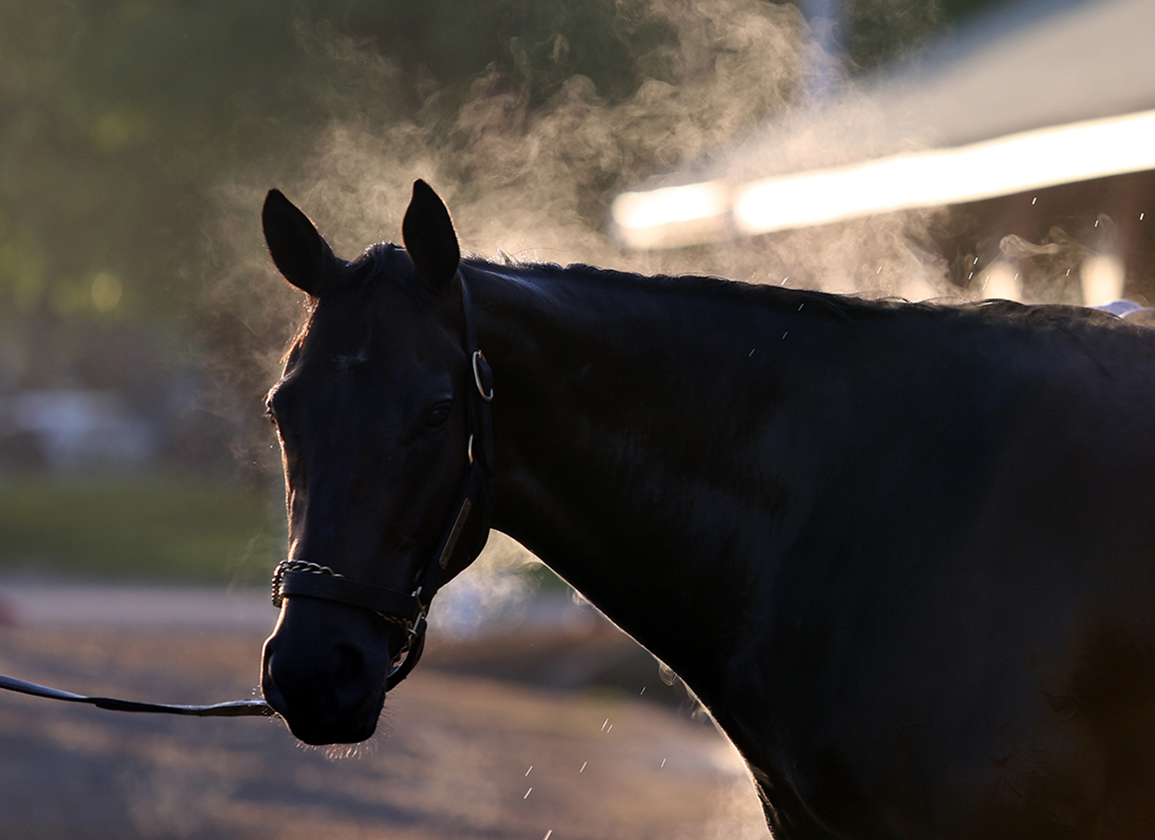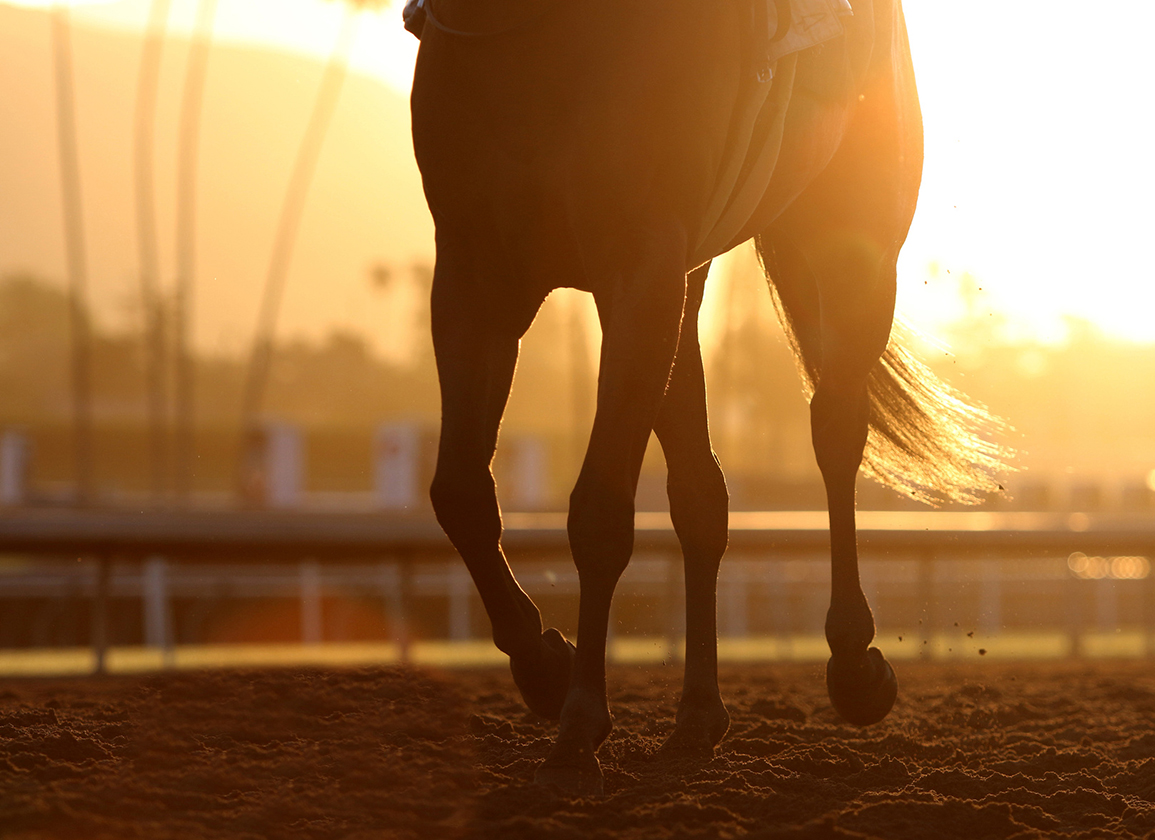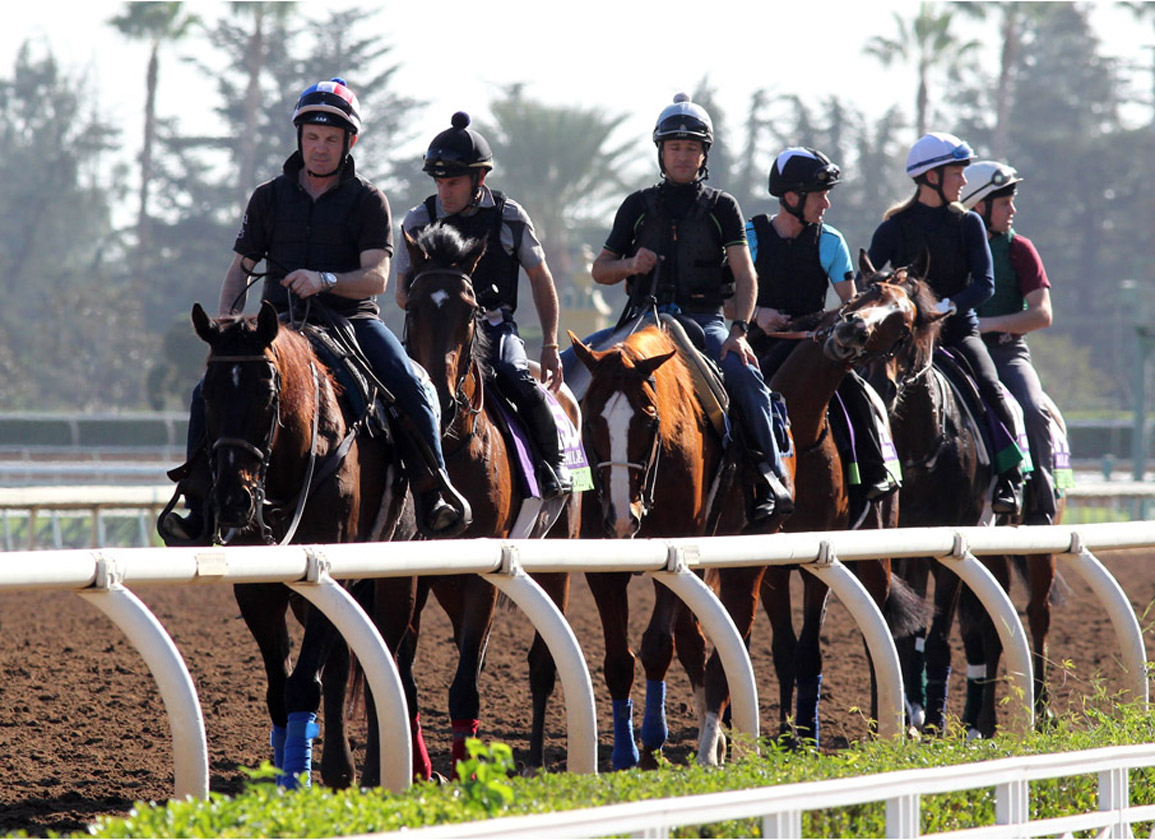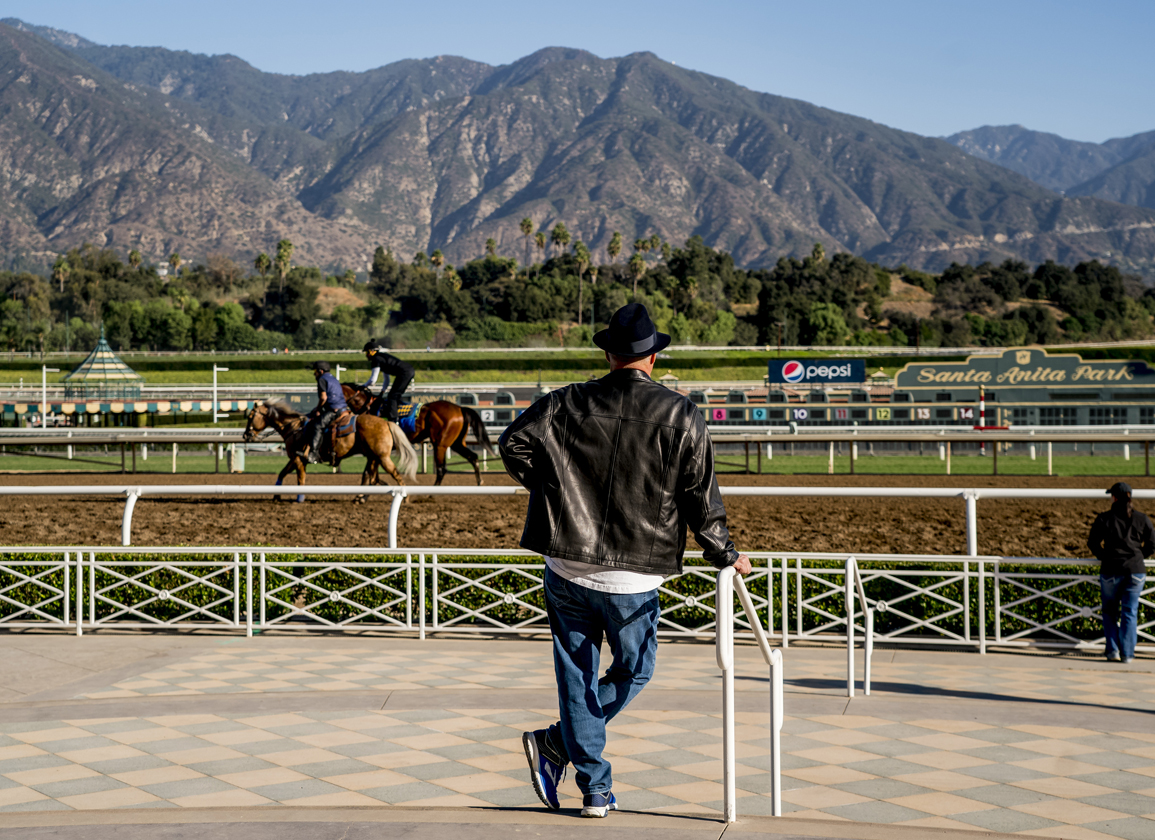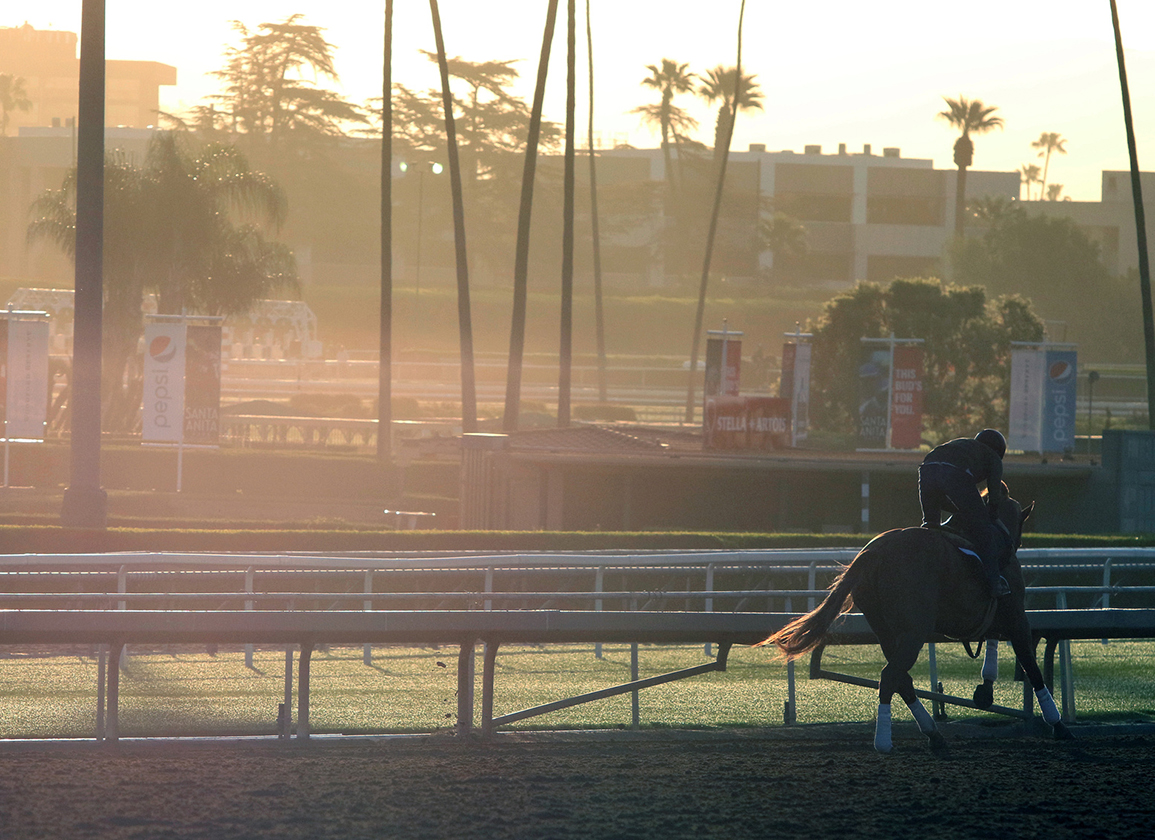Last week, an important piece of the Horseracing Integrity and Safety Act (HISA) puzzle was slotted into place when the Horseracing Integrity and Safety Authority's board of directors announced that Drug Free Sport International (DFSI) had been selected as the enforcement agency for the Anti-Doping and Medication Control (ADMC) arm of the program.
DFSI has helped administer drug testing programs to a slew of human sports organizations, like the National Football League, NCAA, National Basketball Association, Ladies Professional Golf Association, the PGA Tour, NASCAR and Major League Baseball.
Last week's announcement included a new wrinkle in the enforcement side of the ADMC program: DFSI will establish the Horseracing Integrity and Welfare Unit (HIWU), led by a five-member advisory council.
To discuss DFSI's newly minted role within HISA, the evolving shape of the ADMC program and implementation of the safety program on July 1, TDN spoke with HISA CEO Lisa Lazarus. The following has been edited for brevity and for clarity.
TDN: Why did you choose DFSI as the enforcement agency over some of the other possible organizations touted?
Lazarus: The first and most compelling reason is that they have a tremendous amount of experience in drug testing and test planning. As you would know by now, they handle all of the drug testing for the NFL, for the NBA, for Major League Baseball, NCAA, PGA Tour, NASCAR. They really have a wide range of experience, and they've operated in some really very challenging circumstances.
There's going to be a heavy lift, right, to get this all done by Jan. 1. [But] the amount of testing in horse racing is going to be at around the level of what [DFSI are] doing right now, if you add all their testing together. They do more human testing than any other agency in the U.S.
The reason why I was also really impressed with them and convinced that they could make it happen is that around the time that COVID began–and a lot of these testing agencies realized that without sport they'd be really challenged, sort of economically–was [DFSI] quickly dovetailed to COVID testing. They very quickly launched a very good and effective COVID testing program that helped bring a lot of the major sports back into operation. What they were able to show us about how they made that happen in a relatively short timeframe, how successful it was, was one of the things that convinced us that they'd be up for the job.
The other thing was the value proposition. Ultimately, it's the industry that's funding HISA, and so, we want to be sure that whatever money we're spending, we're spending efficiently and wisely. That there's a good value proposition there. We felt that they did. And they also embraced the concept that we had to create this Horseracing Integrity and Welfare Unit, which I modeled after very successful international units, like the Athletics Integrity Unit, Tennis Integrity Unit. It's been the new wave in the last five or so years, and I really love the idea of trying to make that happen for horse racing. They've shared that vision and we're happy to get behind it and support it.
TDN: The Horseracing Integrity and Welfare Unit–this five-member advisory council–what is their role exactly?
Lazarus: So, the way that it's working is that HISA has entered into a contract with the Center for Drug Free Sport, and the Center for Drug Free Sport is creating this Horseracing Integrity and Welfare Unit. There are a couple reasons why we're doing it this way.
One is the horse racing testing business essentially is so big that it really requires, we believe, its own separate entity and its own sort of separate business model. Also, DFSI did not have sufficient existing expertise in some of the areas that we required to run the program effectively…
TDN: Which areas are those?
Lazarus: Those would be prosecutions, like result management–they didn't have an existing legal staff to carry those prosecutions out. Just take a step back for one second. It's very unusual for the testing agency to also do the prosecutions–[DFSI are] not doing that for other clients. That's something we have to build separately. We [also] wanted to put a lot of resources into investigations and they didn't have sufficient in-house resources for investigations.
So, by building this integrity unit, it's allowing us to hire and bring people in that have expertise in those areas.
TDN: You've said the new unit will require 32 employees to do everything from lab accreditation to results reporting, investigation and education. So, those 32 employees will fall under the remit of the Horseracing Integrity and Welfare Unit?
Lazarus: Correct. While some of those employees are existing Center for Drug Free Sport employees that will move over, it's going to be a separate unit that operates on its own. The advisory council is essentially like a smaller board that has the expertise in each of these different pillars to help guide the full-time employees.
TDN: But ultimately it's DFSI who will sign off on whatever the advisory council suggests?
Lazarus: Yes.
TDN: How far along are you in getting that 32-strong workforce together?
Lazarus: I would say we have about half of the key people and I expect in a couple weeks from now, we'll have all of the top people identified and agreements reached with them.
To hire the more junior workers below might take a little bit more time, but we don't expect those to be as difficult to fill–[those are] people that you need to execute the testing, some regional directors and all that. That might take us another few weeks after those two weeks, but I'm confident we're going to have everyone in place by the end of the summer.
TDN: Do you have an idea of cost?
Lazarus: If you saw the budget that was made public, you would see that there's about $5 million to $6 million in anti-doping startup costs for 2022, which also includes some tech costs, because there's various apps, things that we're going to need to build. For 2023, we don't have those costs yet because part of what we want the advisory council to help us decide is the optimum level of tests.
There are three categories of tests in horse racing. We have your out of competition, you have your TCO2 for milk shaking, and then you have regular race-day testing. We have some research and some ideas of what those numbers are optimally, but that's part of what the advisory council is going to help us decide. It'll also involve some determination around what's the right amount of money to spend on investigations. That's part of their role.
TDN: With less than two months to submit the ADMC rules to the Federal Trade Commission (FTC), specifically, what parts of the materials that U.S. Anti-Doping Agency (USADA) has put together will DFSI use?
Lazarus: Something like 90%. I mean there's only 5%, 10% where we're actually going through to make sure that we haven't missed anything, that everything is fit for purpose.
TDN: Will DFSI take a binary approach to regulating medications like USADA outlined with primary and secondary substances? Or will it look more like the Association of Racing Commissioners International (ARCI) model rules' alphanumeric system?
Lazarus: It'll be 100% only based on the [World Anti-Doping Agency (WADA)] code system, right? You saw the drafted rules and proposed rules that were based on a WADA code philosophy structure but were modified to be sensible for horses. So, that's essentially what it's going to look like. It will not be the ARCI model rules. There are some things in the ARCI model rules that are working really well, that we're going to borrow and integrate, but the system itself is going to be a WADA-based system, philosophically.
TDN: How far along are you in putting together the regulated therapeutics list?
Lazarus: That is something we hope to have together by the end of the summer. That's not something that's going to be subject to review.
TDN: Not?
Lazarus: I'm sorry, we're not going to be ready to release that list when we release the [ADMC] rules for public comment. But everything [ultimately] has to be approved by the FTC. I didn't mean to suggest that wasn't the case.
TDN: Some industry stakeholders have voiced concern about transparency aspects of the USADA materials. For example, “A” sample results aren't necessarily going to be made public until the “B” samples are returned. Is that something DFSI will address?
Lazarus: Yes, that's something that we're still discussing. We recognize how important transparency is. I come from the International Equestrian Federation and their system is to publish as soon as the A sample results are available. They're published unless it involves a minority, so a child, basically. That's a system I personally favor, but we're still evaluating what the right system [is] going to be for this program.
TDN: What laboratories will be used come Jan. 1? Will DFSI bring in its own set of labs?
Lazarus: No. So, the way the system is built is to allow for some fluidity so that we don't have any problem to be up and running January 1st. The law actually provides that any lab accredited by the RMTC [Racing Medication & Testing Consortium] will have a one-year provisional accreditation while we start accrediting the labs. There are nine labs that are currently accredited by the RMTC.
TDN: Does the variance in testing capability between those batch of labs pose any legal liability under this uniform banner?
Lazarus: You raise a really good question. That's something that is going to be a part of the program, which is the harmonization piece. We're going to require the labs to be harmonized, so that they [ultimately] reach agreement where screening limits are consistent from lab to lab once they're reaccredited. It would not be a success if labs had different levels of positive test assessments. If the levels or the testing had any discrepancies, that wouldn't be optimal, obviously, so that's something that we're going to work very hard at achieving.
TDN: How quickly are you hoping that harmonization process to occur?
Lazarus: Obviously as soon as possible. That's not my area of expertise. We have Dr. Larry Bowers [former chief science officer at USADA], who's going to be our resource in that regard. I don't know off my head, but obviously we're hoping to work toward it quite quickly. And we also hope that with a smaller number of labs that are accredited, that will be something achievable [without] a whole lot of difficulty or challenge.
TDN: You had talked before, prior to DFSI coming on board, about the whereabouts program being phased in over time. Is that still the case?
Lazarus: Yes, we're looking at the optimal whereabouts program. It's something that we hope we'll be able to get off the ground fairly quickly. The question is: Given that most horses are stabled at the race tracks, what does a whereabout system really need to be?
A horse that needs to be available for testing [within] several hours notice, we need to know where the horse is. But we've realized, and as we've thought through this, that for the vast majority of horses, we already have that information. So, it's going to take us a little bit of time to figure out what the best program is, but we do expect to have one within the first couple years.
TDN: 5 Stones intelligence (5Si) is going to be bought on board as an investigative body. What layers of transparency will surround the investigative work that 5 Stones does to make sure that that work will hold up legal scrutiny?
Lazarus: The first thing I'll say is that the reason why we thought it just made a lot of sense to involve 5 Stones–and they were eager to be supportive–is that there already are entities like The Jockey Club [and] The Meadowlands that have spent considerable amount of funds to have 5 Stones investigate actors in racing. So why wouldn't we want to take the benefit of their knowledge, their research, their information base to help us?
From my standpoint, with regards to the Horseracing Integrity and Welfare Unit, our job is not to prosecute actors, or to make sure things stand up in court. The way that we'll use the investigative resource is to try to help us figure out who the cheaters are and what they're using and when to test them and for what. And that's how we'll mostly use the investigative resource.
Obviously, if they're used for prosecutions, I think they're fairly capable and also experienced at making sure that evidence is strong. But for us, it's really about getting the information that allows us to test in a way that's really efficient.
If you test humans, horses, anyone without that investigative resource, you usually have about 1% to 2% hit rate in terms of positive tests. When you use investigative resources, that goes up to 15% to 20%. So, it's a huge difference.
TDN: It's been discussed how a centralized database could be used to identify outliers, potential cheats and whatnot, as well as to help with the safety side of things. How far along is that database from being fully built and operational?
Lazarus: In one way we're far along and one way we're not far along at all.
We've already started the process of registering horses, so the database is live, it's available. If you go to our website, you could register yourself and your horses. But we don't have a huge body of data yet because the registration processes just started in the last couple of weeks.
However, come July 1, if you want to participate in the covered horse race, which is in any horse racing jurisdiction that exports their signal, then you'll have to register with us. So, we expect, in a few months, to have a very considerable database. Then we'll let the veterinary experts help us figure out how to use it in a way that's going to help horses, help keep everyone safe.
TDN: Do you have a rough date with which you'd like to see something really substantive up, a close approximation of an ideal end goal for this database?
Lazarus: I think a year from July 1 [2022]–which is our deadline [for implementation]–we'll be in a position to really have the data that we need to perform the sort of analysis that we think will make a difference. Two or three years down the line, it'll be even better.
Note: Part two of this Q&A will encompass the working relationship between the Authority and DFSI, media criticisms of the new enforcement agency and potential problems when HISA launches in less than two months.
The post Q&A with HISA’s Lisa Lazarus: Part One appeared first on TDN | Thoroughbred Daily News | Horse Racing News, Results and Video | Thoroughbred Breeding and Auctions.
